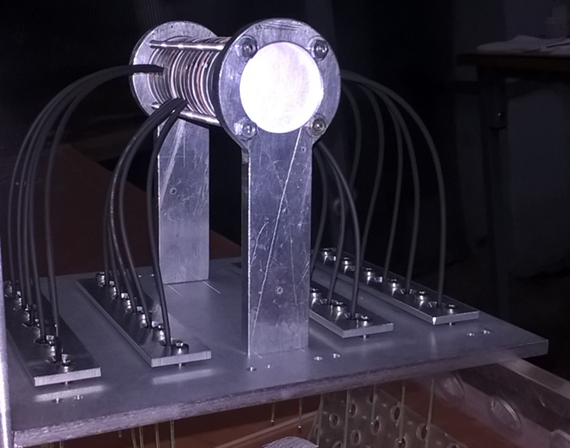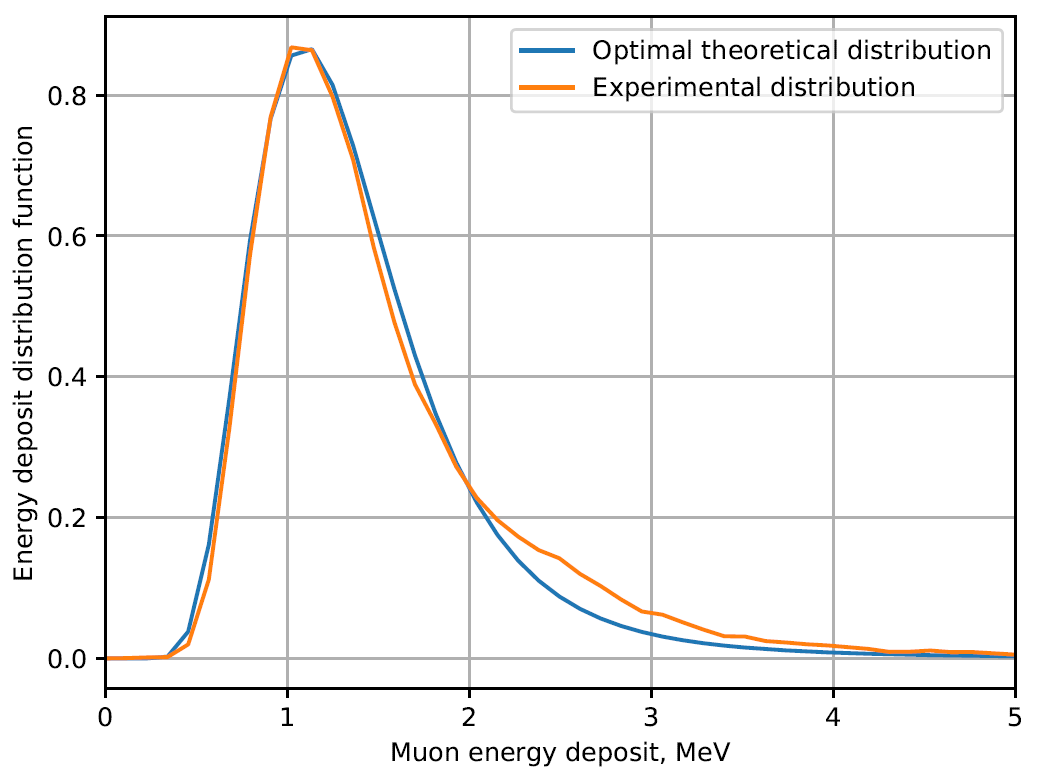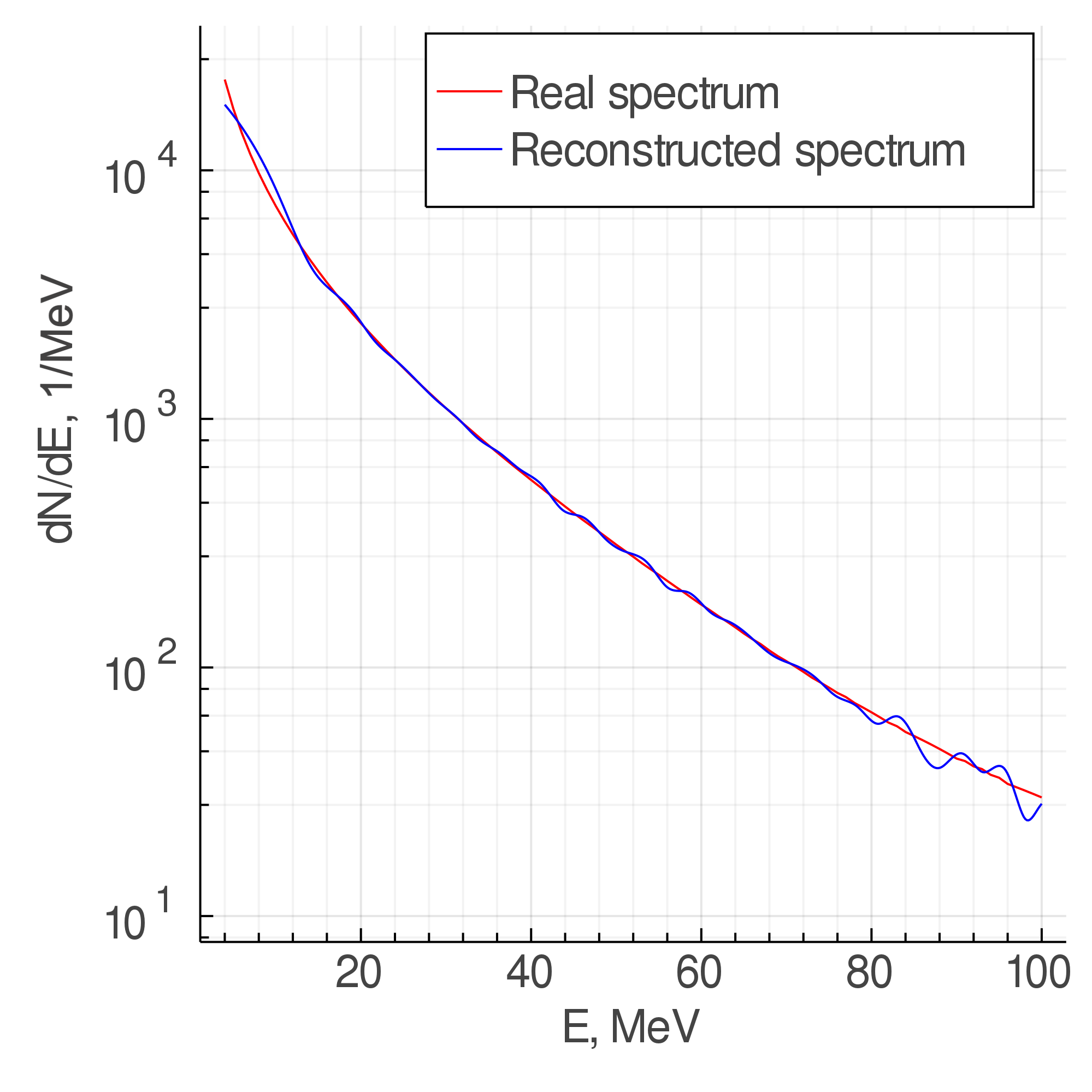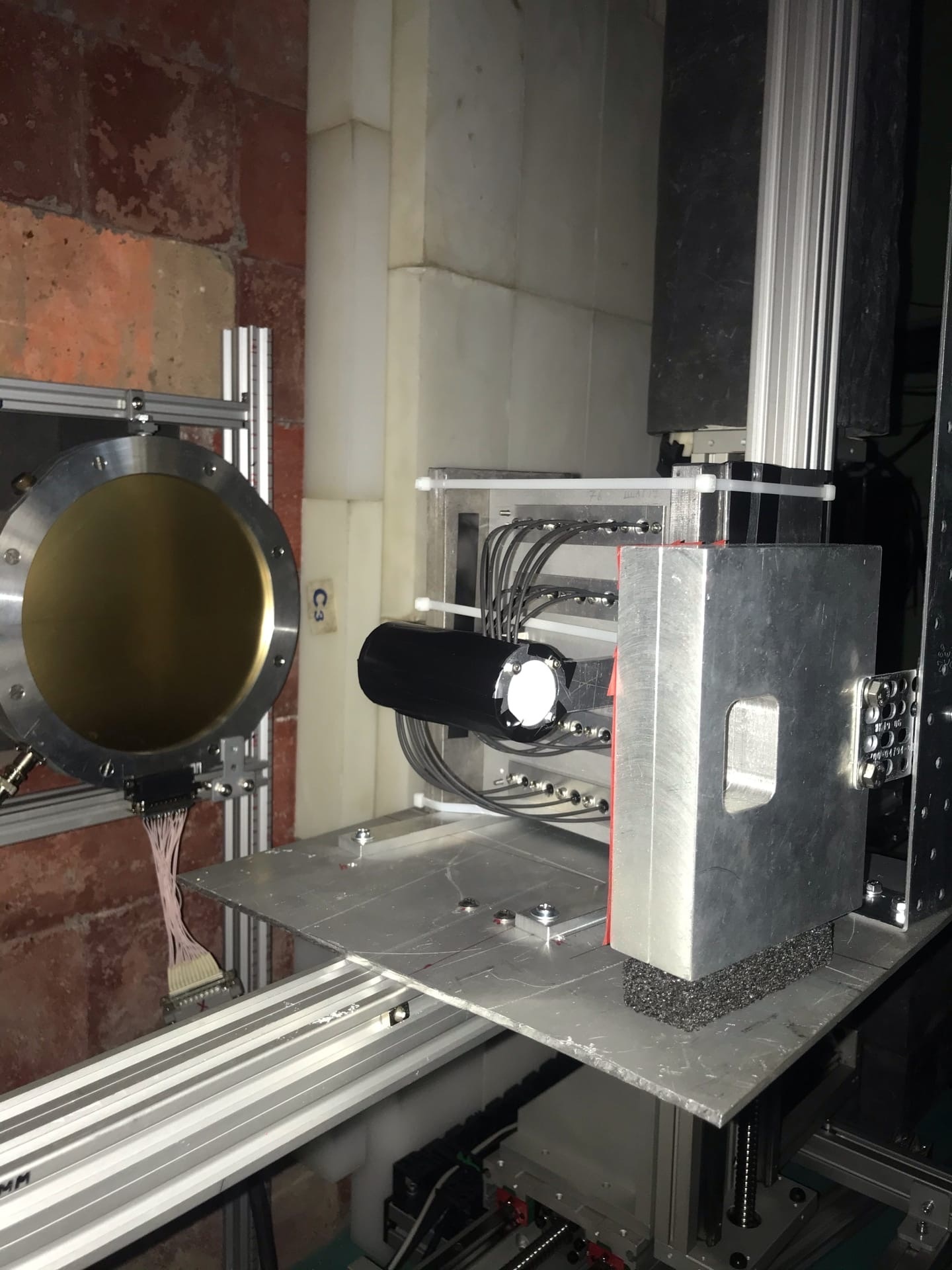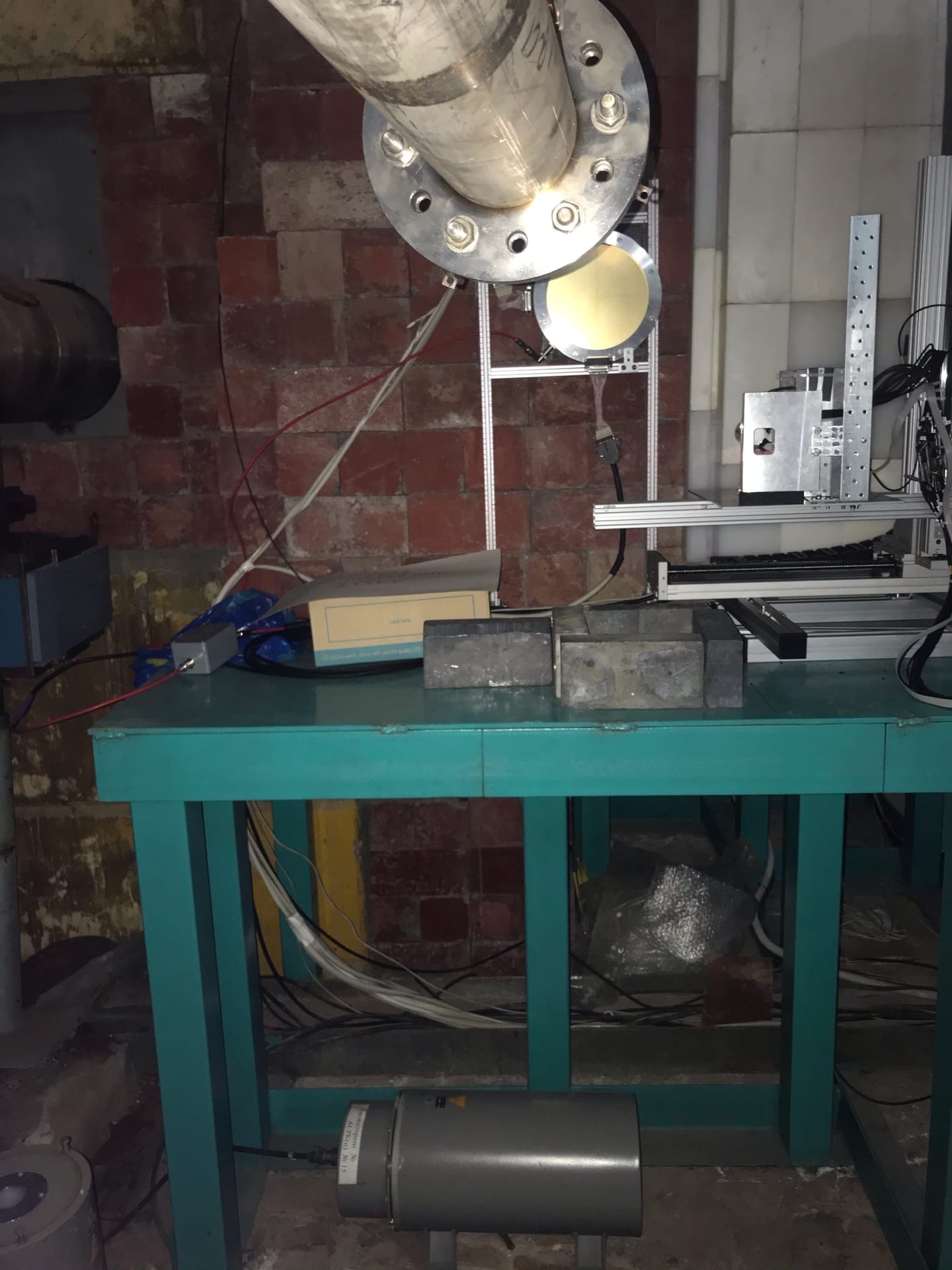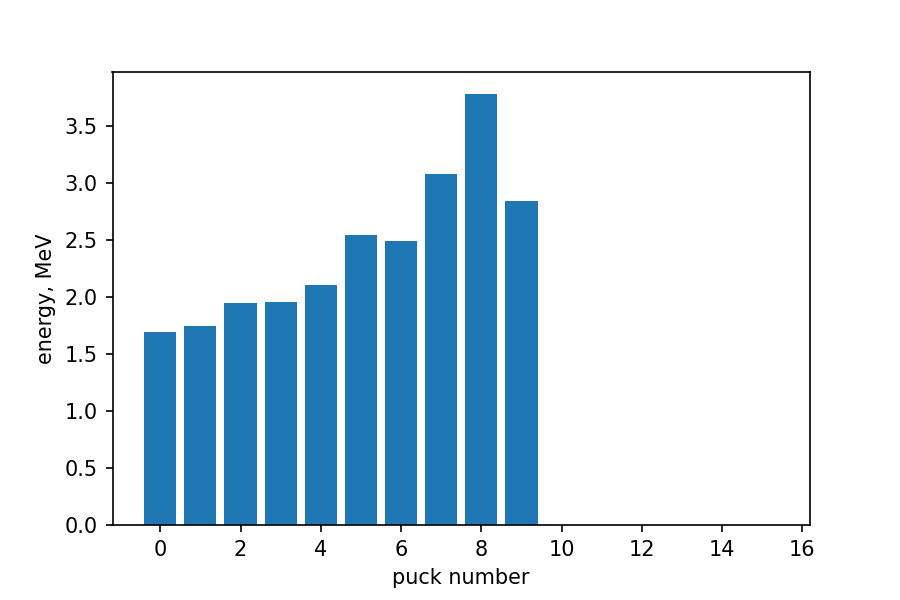A detector for solar cosmic rays measurement was designed. The detector is to measure protons with kinetic energies from 10 to 100 MeV and electrons with kinetic energies from 1 to 10 MeV.
The detector represents a scintillator cylinder, divided into several pucks. Each puck is a separate channel, which works as an independent detector. Particle types and energies are restored via their loss curves measured as a particle signal channel distribution.
Prototype calibration
A laboratory prototype of a solar cosmic ray detector was assembled. It consists of 20 scintillator pucks. Each puck is a separate detector channel with an individual photodetector - SiPM. SiPMs collect the photons from channels via optical fibers. Every channel is wrapped with Tyvek to prevent optical cross-talk.
Signals from SiPM were collected and processed by analog micro schemes, which were borrowed from our colleagues from INR RAS. Processed signals were digitized with a CAEN digitizer.
The detector channels were calibrated with cosmic muons. A theoretical formula for muon signal within a detector channel distribution was obtained:
| {f(\varepsilon) = \begin{cases} f_0 \frac{\varepsilon_0^3}{\varepsilon^4 \sqrt{1 - (\frac{\varepsilon_0}{\varepsilon})^2}} &\text{, $\varepsilon$ < 7.65 MeV}\\ f_0 \frac{\varepsilon_0^3}{\varepsilon^4 \sqrt{1 - (\frac{\varepsilon_0}{\varepsilon})^2}} + f_0 \varepsilon_0 \left(\frac{2r}{\varepsilon d}\right)^2 \sqrt{1 - (\frac{2r\varepsilon_0}{\varepsilon d})^2}&\text{, $\varepsilon \in (7.65 MeV, 7.72 MeV)$} \end{cases}} |
This distribution was convoluted with Gaussian distribution, which characterizes the channel error. Experimental muon data were fitted with the convolution and the calibration with channel errors were obtained:
This new calibration method allows one to calibrate the detector channels via all muons registered, not only vertical muons.
Integral mode
When registered particles flux is higher than the detector count rate an integral mode is to be used. In this mode, the integral loss curve for all particles, detected within exposition time, is analyzed via the Turchin regularization method. This method was successfully implemented and tested by data obtained with Geant4 simulations.
With the integral mode, the detector is potentially able to measure high fluxes of solar energetic particles.
Accelerator experiment
The detector was tested at the proton accelerator of the INR RAS. The stand for this experiment was assembled. This stand consisted of several parts: the detector prototype, a collimator, a moveable mechanism for moving the detector under the beam.
Protons with kinetic energy 74 MeV were successfully detected. The energy deposit distribution was obtained. This distribution possesses a Bragg peak, which corresponds to 74 MeV protons. In the figure below, each channel is equal to 4 mm of polystyrene.
